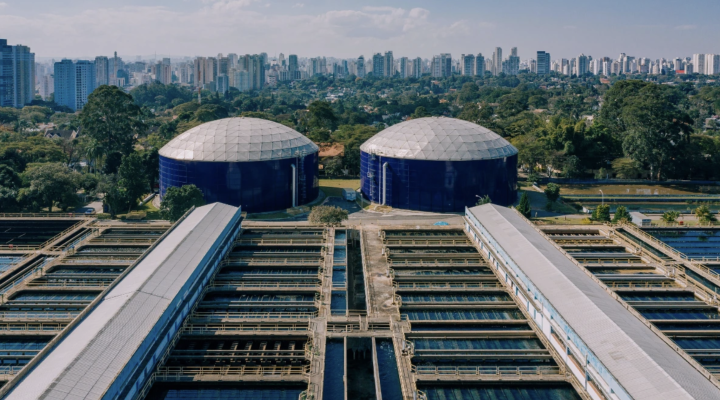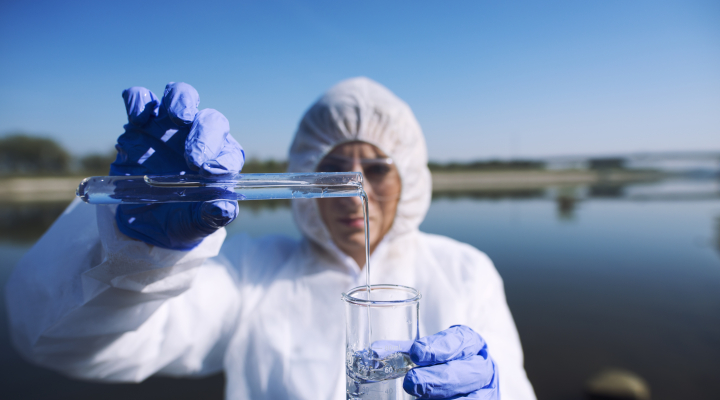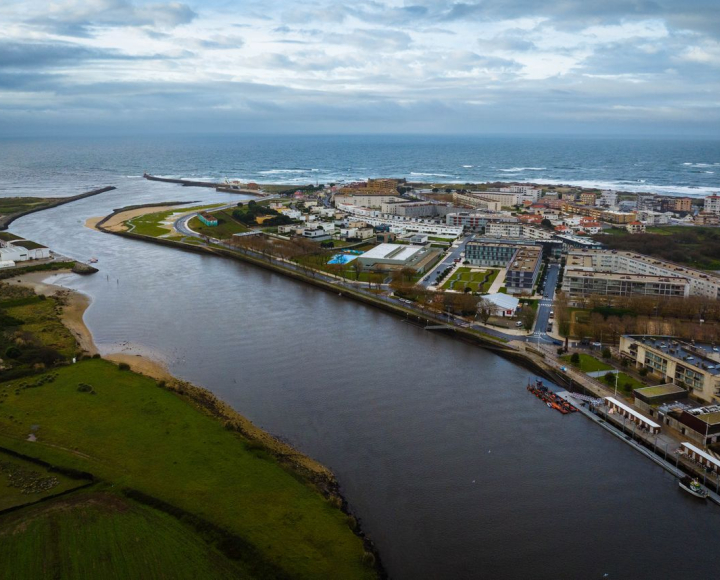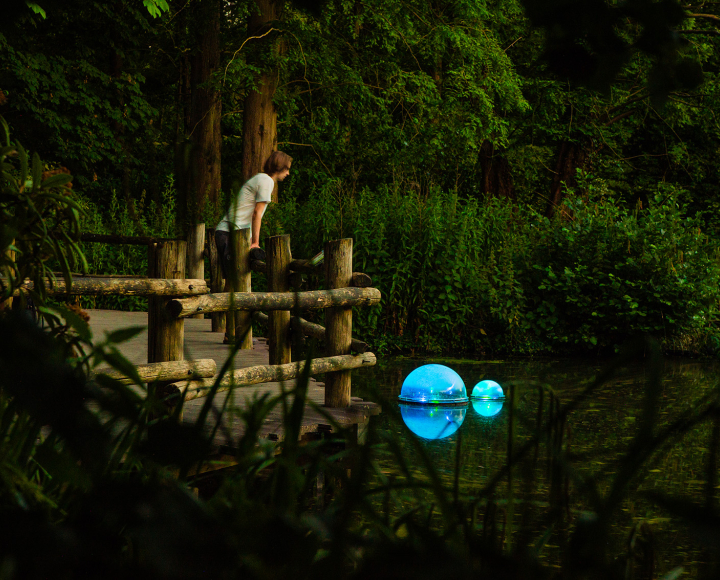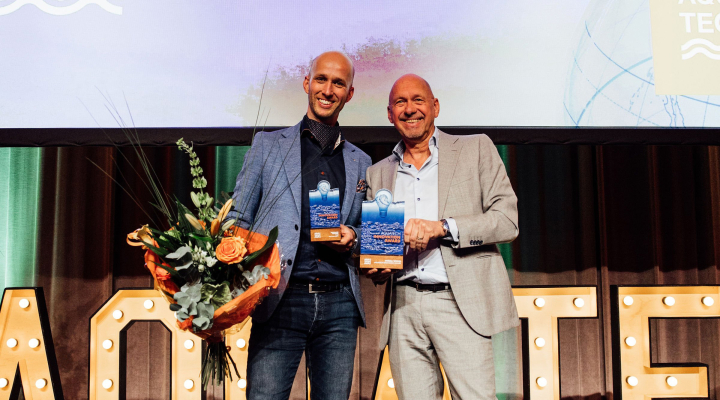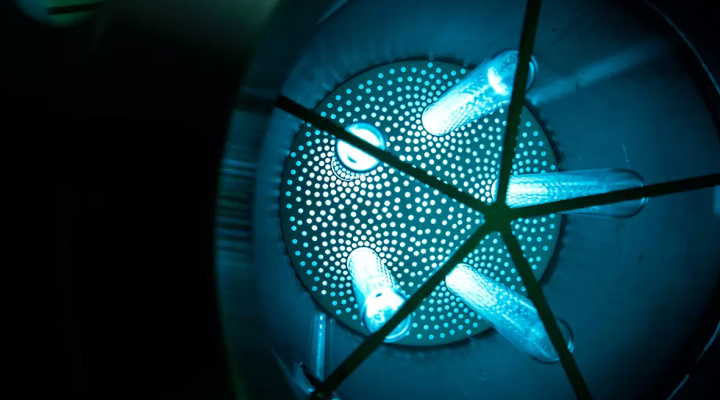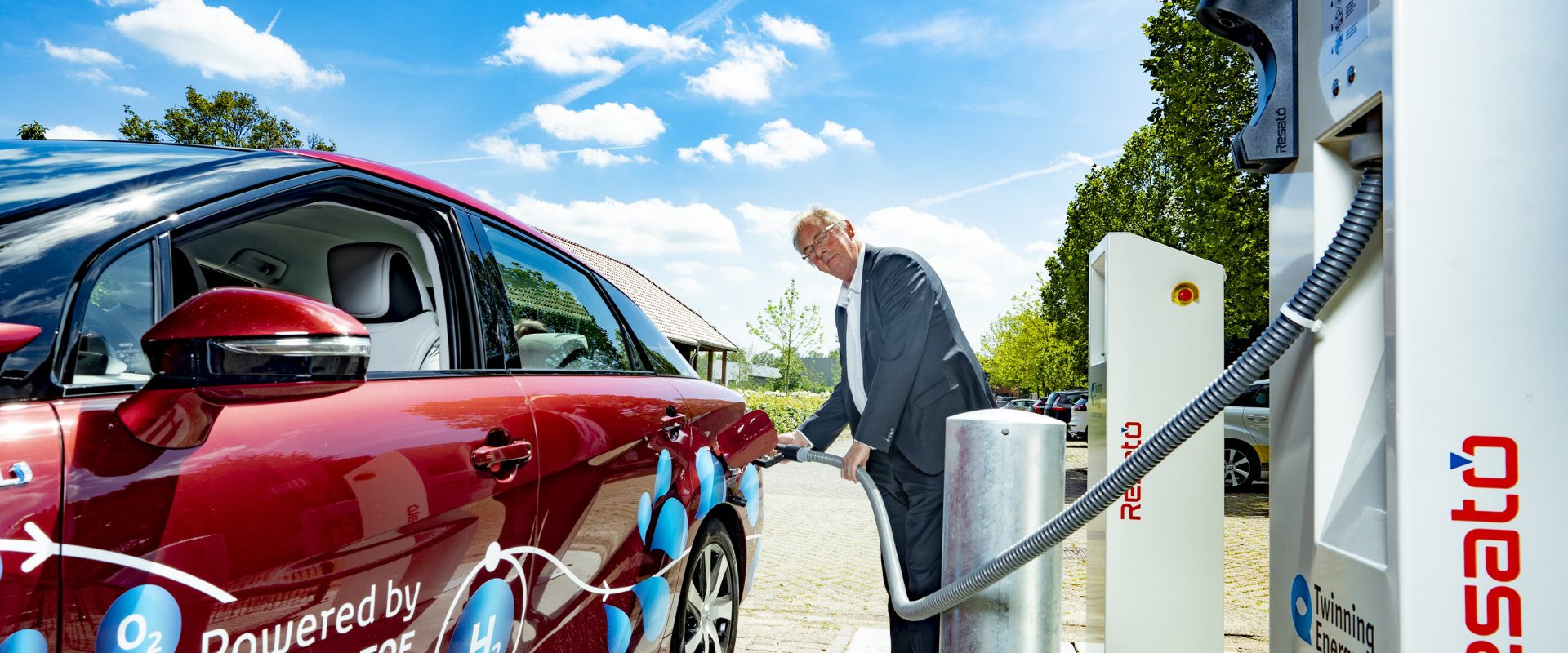
KWR institute opens green hydrogen filling station for own car fleet
Water research institute KWR has recently commissioned a hydrogen filling station on its premises, allowing the switch over to a fleet of hydrogen-electric company cars. The green hydrogen station is part of a research project by KWR to use solar energy and rain water to produce electricity, hydrogen, heat and ultrapure water in a sustainable manner.
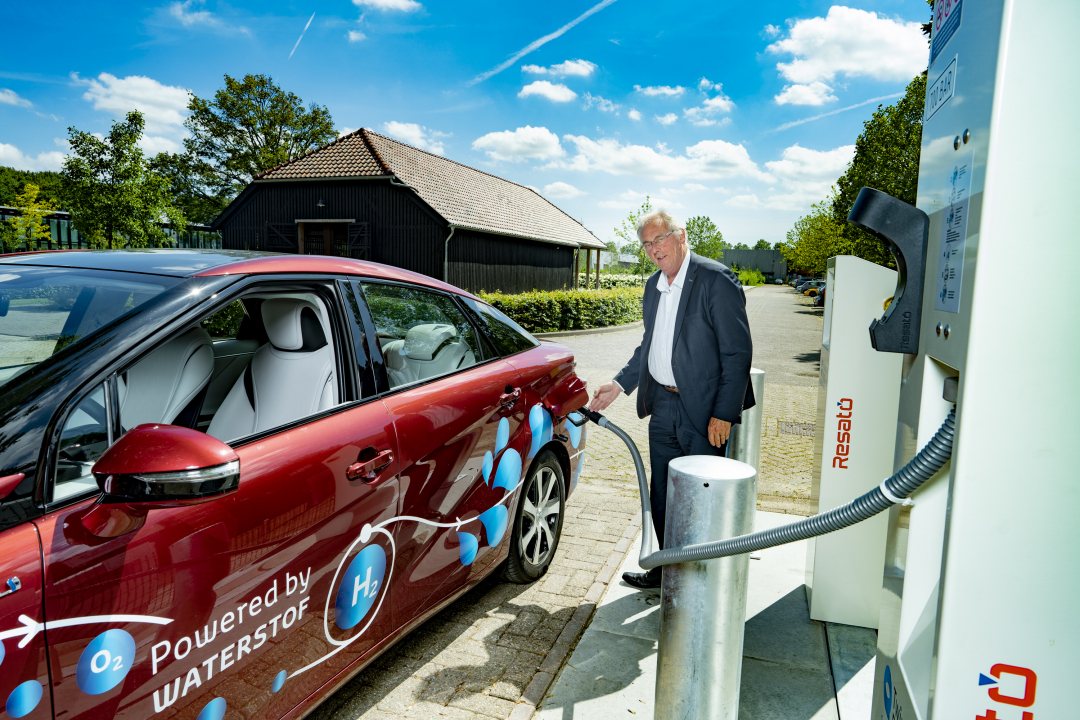

Sun and rainwater
Next to ithe KWR site, a 8.7 MWp solar energy park is under construction. The idea is not only to transfer this electricity to the network, but also to convert it into other energy carriers, such as heat and hydrogen.
In this way, energy supply and demand can be better matched, so that in a future, with ample solar and wind energy, a reliable energy supply can be realised.
Sustainable mobility
KWR recognises that hydrogen-electric transport is increasingly playing a role when it comes to sustainable mobility, and hydrogen-electric vehicles are gradually coming onto the market. These vehicles are powered by an electric motor, whereas the electricity is generated through a so-called fuel cell which is fuelled by hydrogen.
As hydrogen fuelling facilities are still rare in the Netherlands, the research institute decided to install a filling station on-site to meet its own needs.
Special energy storage
In collaboration with guest professor Ad van Wijk, a professor at Delft University of technology on future energy systems, KWR has worked for many years on the storage of energy, both in the form of heat and of hydrogen.
Considering its motto ‘bridging science to practice’ the switch to hydrogen-electric vehicles is a logical first step. ‘We believe that the storage of energy in the form of heat and green hydrogen will be playing a crucial role in the near future’, says Dragan Savic, KWR’s CEO. ‘And we are now implementing the practice in-house.’
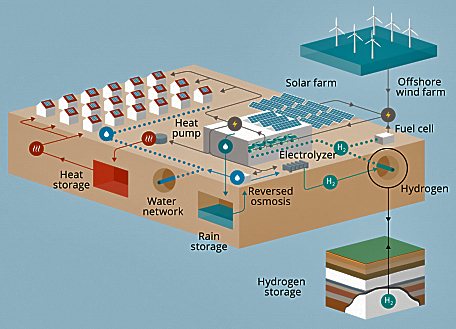

Showcase
Within the Power to X research project the generation and use of green hydrogen is only one pillar of the concept. The project also comprehends heat storage, (rainwater harvesting and use of DC electricity. These are planned to be realiased at a later stage
In the concept, the surplus electricity during summer is used for heating of water (40-60˚C) using a large heat pump; the heat is stored in the subsurface for subsequent use during winter to heat homes and buildings.
The rainwater collected from the solar panels and the roofs of houses and be stored in the subsurface for the production of ultrapure water.
The electricity system is being studied to see whether it would be possible to install a DC (direct current) network, with a view to cutting efficiency losses between the different system components.
Collaborating partners in the Power to X project are Amsterdam water utility Waternet, contractor firm Aveco de Bondt/VolkerWessels, hydrogen specialist PitPoint, Delft Technical University, innovation implementer Allied Waters and KWR Water Research Institute.
The research phase has been co-funded by the Top sectors Water/Maritime and Energy.




